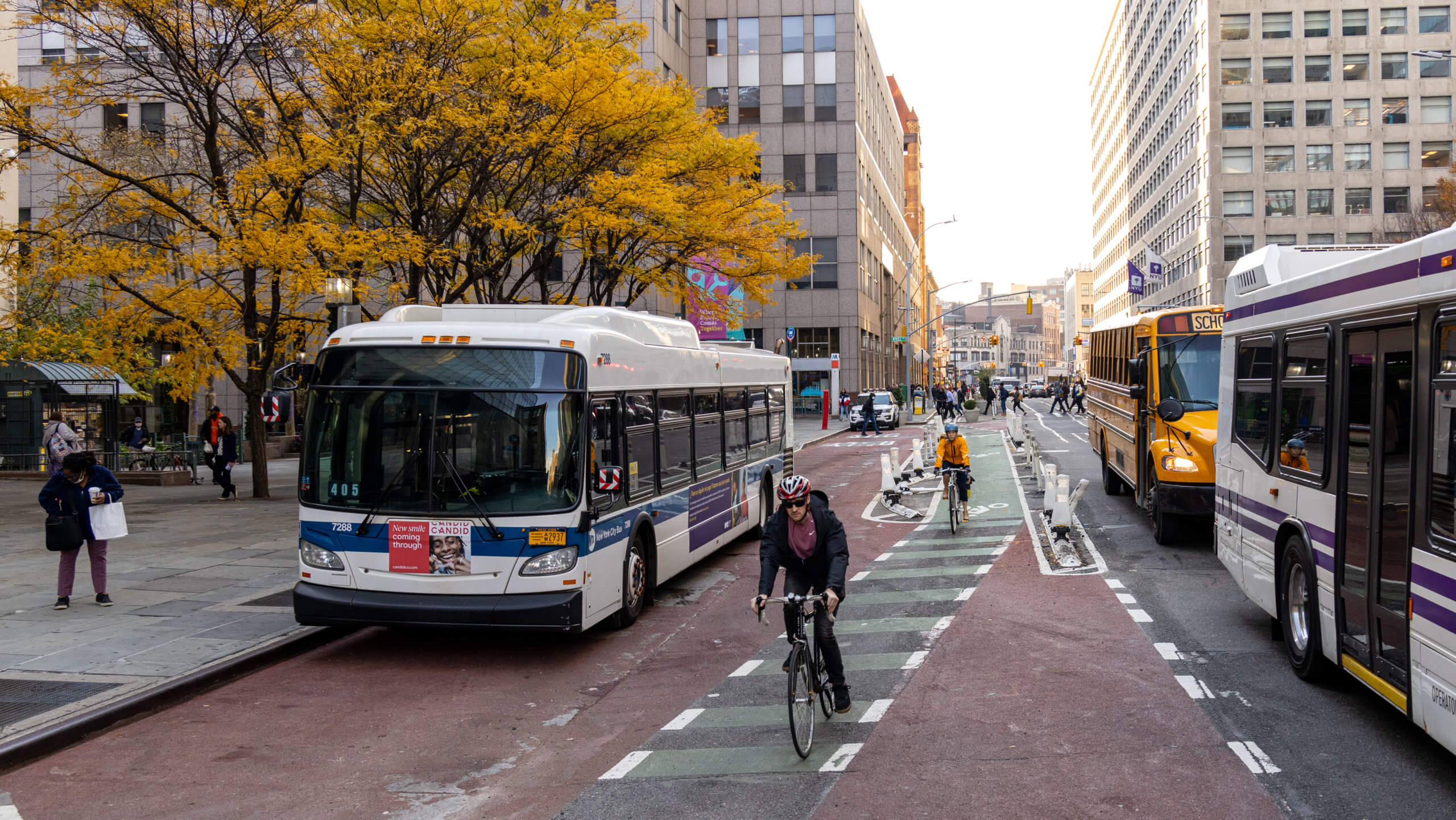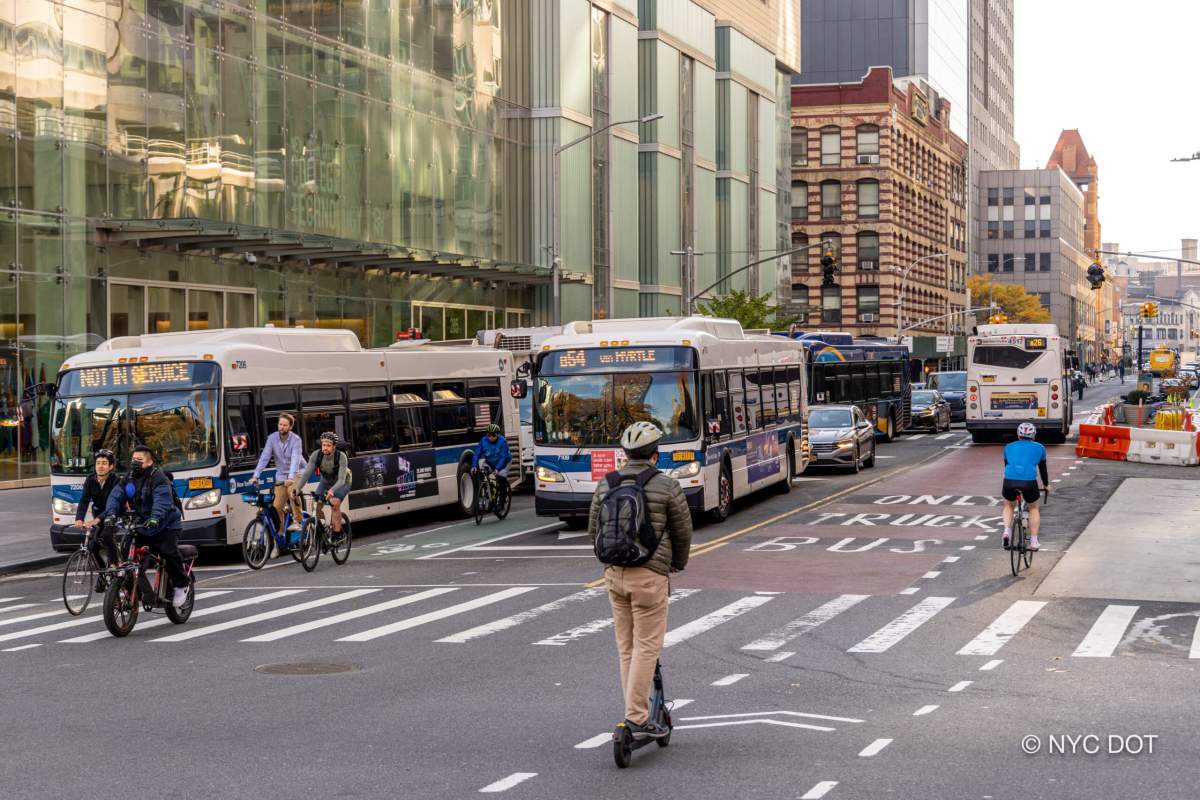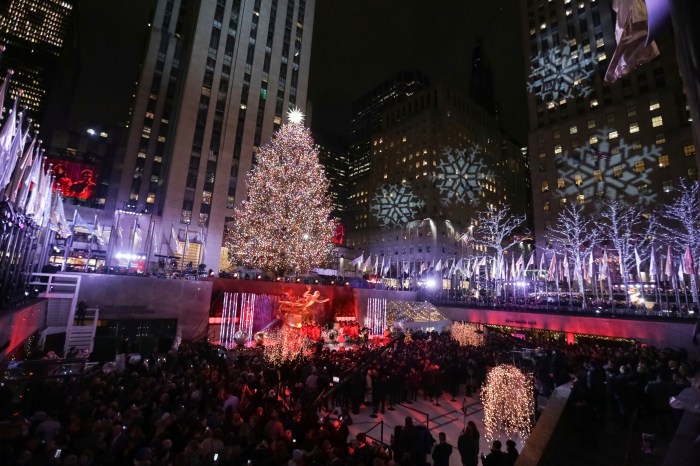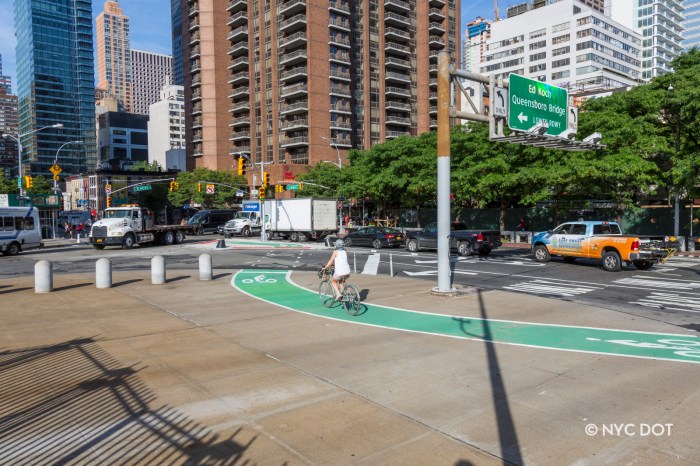The Jay Street busway will permanently remain on the busy Downtown Brooklyn thoroughfare after a year-long pilot, Mayor Bill de Blasio announced Friday.
“Downtown Brooklyn deserves better bus service, and the Jay Street busway has already improved commutes for thousands of residents, workers, and students who rely on it every day,” de Blasio said in a Nov. 19 statement. “It’s time to make it permanent – and build on this progress to make public transit faster, safer, and more reliable for riders in every borough.”
The city’s Department of Transportation (DOT) launched the Jay Street busway in August 2020, banning private car through-traffic from on the 0.4-mile stretch from Tillary to Livingston Streets on weekdays from 7 a.m. to 7 p.m.
Bus speeds in 2021 went up by as much as 47% compared to pre-pandemic levels in 2019, but have started to slow again compared to a peak 2020, as more drivers returned to the business district, according to an October presentation by DOT to local neighborhood and business representatives known as the community advisory board.
Bus speeds have declined to a sluggish average of 7.9 miles per hour across the Five Boroughs in October, recent stats by the Metropolitan Transportation Authority detailed.
The busway serves some 47,000 straphangers across seven bus routes operated by the state-controlled MTA, including the B26, B54, B57, B61, B62, B65 and B67.
“We’re transforming Downtown Brooklyn, getting cars out of the picture and focusing on our sustainable transportation future, transit and cycling,” said DOT Commissioner Hank Gutman in a statement.
Jay Street is also a key connector to the Brooklyn and Manhattan bridges for cyclists pedaling across the East River, which became even more important when the DOT opened the new Brooklyn Bridge bike lane in September.
The amount of vehicle traffic that has spilled over onto surrounding streets has been “minimal” as a result of the busway, according to the DOT presentation.
Local car access is still allowed but drivers must get onto Jay Street from side streets and there are cameras at both ends of the busway to catch scofflaws.
DOT issued an average of 60 fines a day in August, according to the agency, but the area remains a hotspot of illegal parking, including employees of the many government headquarters and courts misusing their official placards to park, DOT acknowledged in the presentation last month, saying “enforcement challenges remain.”
In fact, NYPD leaves at least one squad car parked illegally in the northbound side of the red-painted bus lane outside MetroTech Center so regularly that it can be seen in DOT’s own images released as part of the announcement.

Jay Street was the first new busway pilot the city installed as part of five Mayor Bill de Blasio promised in summer 2020 following the success of the 14th Street busway in Manhattan a year prior.
The city’s original busway — even if it doesn’t have that label — is just around the corner on the Fulton Mall, where traffic has been limited in favor of buses since the 1980s, when city officials installed the bus-only corridor to revitalize the neighborhood and boost the shopping strip.
Four out of those pilots hizzoner promised during the pandemic have become a reality, including on 181st Street in Washington Heights; Main Street in Flushing, Queens; and most recently, Jamaica and Archer avenues in downtown Jamaica, Queens.
The proposed Fifth Avenue busway hit roadblocks several times over the past year, with DOT at first watering down its own proposal in the face of opposition from luxury business interests along the iconic street, and then punting it until after the holidays and after de Blasio leaves office, Streetsblog reported.



































